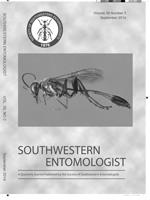Current knowledge regarding predatory wasps (Hymenoptera) of the Yucatan Peninsula, an important region of the Mexican Neotropics, was reviewed. The review includes an overview of the richness of predatory wasps at global, regional, and national levels, as well as revision of pedotrophic and nesting behavior of the species. The review showed the known diversity of species in the Yucatan Peninsula, and that information on pedotrophic and nesting behavior is sparse. To date, 78 species have been recorded in the Yucatan Peninsula. The Family Vespidae has the most species (36) followed by Crabronidae (20), Pompilidae (18), and Sphecidae (four). Most species in the Peninsula were recorded in the state of Yucatan, while few species were recorded in Campeche and Quintana Roo. The pedotrophic behavior of the wasps involves use of some species of insects and caterpillars and spiders. Nests of predatory wasps were most often constructed in the soil or of clay. Further studies are recommended to better understand ecological interactions, as well as the origin and evolution of social behavior and the role wasps play as predators of other arthropods in tropical ecosystems.
How to translate text using browser tools
1 September 2014
Predatory Wasps (Hymenoptera) of the Yucatan Peninsula
Maximiliano Vanoye-Eligio,
Virginia Meléndez Ramírez,
Ricardo Ayala,
Jorge Navarro,
Hugo Delfin-González
ACCESS THE FULL ARTICLE

Southwestern Entomologist
Vol. 39 • No. 3
September 2014
Vol. 39 • No. 3
September 2014




